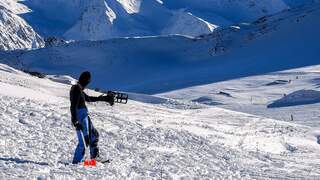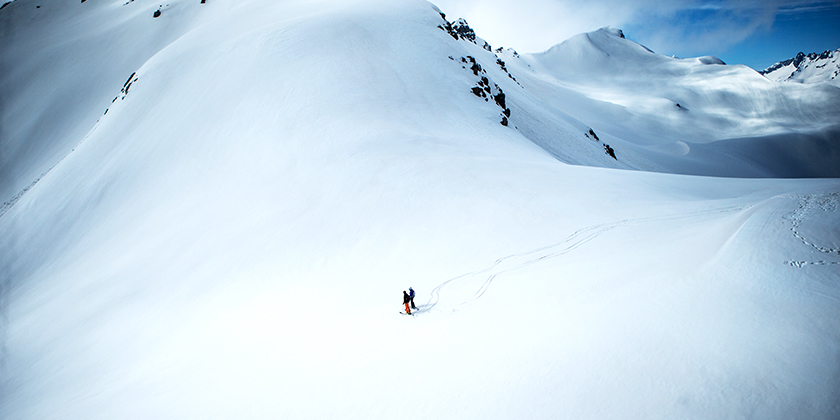Avalanche Awareness & Mountain Safety Guide

If you love snowsports—whether you’re a skier, snowboarder, mountaineer, or simply enjoy venturing into the winter wilderness—avalanche awareness is not just beneficial, it’s critical for your safety. Understanding avalanche risks, making informed decisions, preparing thoroughly, and carrying the right equipment can save your life or someone else’s. This comprehensive guide will give you expert insight, practical advice, and the technical knowledge you need to safely enjoy the mountains..
What Is an Avalanche? Essential Definitions for Snowsports Enthusiasts
An avalanche is a mass of snow, often mixed with ice and debris, that rapidly descends down a mountainside. Avalanches can be triggered naturally—through weather events—or by human activity such as skiing, snowboarding, or walking across a snowfield. Most fatal avalanches are triggered by victims or someone in their group.
Key terms you'll encounter:
- Slab avalanche: A cohesive plate of snow breaks away from the rest, sliding downhill. Slab avalanches are responsible for the majority of fatalities.
- Loose snow avalanche: An avalanche that starts at a point and gathers more snow as it descends, often from newly fallen or unconsolidated snow.
- Terrain trap: A topographic feature like a gully, depression, or flat area where avalanche debris accumulates, increasing burial risk.
- Wind slab: Firm, compacted snow deposited by wind—often unstable and prone to triggering.
Why Avalanche Awareness Should Matter to Every Skier and Snowboarder
Did you know?
Step 1: Preparation—The Foundation of Mountain Safety
Effective preparation isn’t just about packing your bag—it’s about understanding the conditions, researching the terrain, and arming yourself with knowledge.
Checklist for safe prep:
- Check weather forecasts and avalanche bulletins for your chosen region.
- Carry and know how to use essential avalanche safety equipment (transceiver, shovel, probe).
- Study maps and guidebooks to understand the slope angle, aspect, and possible terrain traps on your intended route.
- Listen to local advice, especially from guides and instructors.
Your goal before any trip is to answer: Is my planned route safe today? If there’s doubt, always err on the side of caution.
Step 2: Understanding Avalanche Terrain
Slope Angles and Risk
Steep slopes (generally between 30° and 45°) are the most susceptible to avalanches. Avalanches rarely occur on slopes under 25°, though they can happen if there are terrain traps. Use an inclinometer or your ski poles to gauge slope steepness.
Terrain Traps: Hidden Hazards
Be wary of depressions, gullies, abrupt changes in slope angle, or flat runouts at the bottom of a slope—these are classic terrain traps. In these areas, even a small avalanche can bury victims deeply, reducing chances of survival.
Snowpack Analysis
A weak snowpack is usually the root cause of avalanche instability. Subtle layers of snow, formed through repeated cycles of snowfall, melting, and wind, can create unstable “slabs.”
Expert tip: While on your warm-up runs, poke the snow with your ski pole. Wind slabs often sound “hollow” or squeak when struck.
Step 3: Weather—Nature’s Clues to Avalanche Danger
Weather is perhaps the single biggest factor influencing avalanche conditions.
Critical warning signs include:
- Recent heavy snowfall or rain
- Rapid temperature rises
- Strong winds (especially where snow is transported onto lee slopes, creating wind slabs)
- Signs of recent avalanche activity nearby
Expert observers pay close attention to the weather throughout their day, both at the base and high on the mountain. Wind moving snow, especially on ridgelines, indicates dangerous loading on certain slopes.

Step 4: Human Factors—Your Decisions Matter Most
Avalanche avoidance isn’t just about physical conditions. Human error—choosing risky routes, grouping too closely together, failing to speak up—triggers most avalanche incidents.
Experienced mountain guides always assess not only the terrain but also the mindset of their groups. Are people tired, overconfident, in a hurry, or susceptible to “groupthink”?
Key human factors to watch for:
- Peer pressure to continue despite concerns
- "Expert halo" effect (following someone just because they seem knowledgeable)
- Failing to reassess plans as conditions change mid-trip
Step 5: Avalanche Safety Equipment—What You Need and How to Use It
No skier, snowboarder, or mountaineer should enter potential avalanche terrain without:
- Avalanche transceiver: A device worn on your body, transmitting a signal to help rescuers locate you under snow.
- Probe: A collapsible rod for probing through the snow during a burial search.
- Shovel: For efficient digging (plastic blades break in hard debris—always use a sturdy, metal-bladed shovel).
- Recco reflector: Not a substitute for a transceiver, but helpful for organised rescue teams equipped with Recco detectors.
Pro tip: Practice regularly with your equipment. Seconds count; familiarity can save lives. Attend hands-on training, not just once, but as a regular refresher.
Step 6: Avalanche Bulletins and Local Information
Always consult the local avalanche forecast—such as those from the Scottish Avalanche Information Service (SAIS) or the European Avalanche Warning Services—before you head out. Bulletins will detail current risks by elevation, slope aspect, and hazard level.
Pay attention to:
- Avalanche danger ratings (usually on a 1-5 scale, from low to extreme)
- Recent avalanche activity (“evidence of natural avalanches occurring” is a red flag)
- Specific warnings about weak layers or rapid weather changes
Discussion with locals, patrollers, and guides adds essential context to formal bulletins.
Step 7: Making Safe Choices—Observational Skills Mid-Trip
Throughout your day on the mountain:
- Continually observe for signs of instability—cracks shooting out from your feet, “whumping” sounds indicating slab collapse, or visible recent avalanches nearby.
- Heed your observations—never ignore or explain away alarming signs.
If conditions change—such as a sudden rise in temperature or wind loading snow on your slope—be prepared to change your route or retreat entirely.
Step 8: Group Management and Safe Travel Protocols
Key travel strategies include:
- Only expose one person at a time to dangerous slopes.
- Spread out when crossing suspect terrain (keep other group members in safe zones).
- Avoid stopping in runout zones or terrain traps.
- Communicate clearly; everyone should feel empowered to express concerns.
Step 9: What To Do If an Avalanche Happens
If you’re caught in an avalanche:
- Try to escape to the side.
- If possible, jettison equipment (except your transceiver).
- Use “swimming” motions to stay near the surface.
- As the avalanche slows, attempt to create an air pocket in front of your face and keep one hand near your mouth.
Rescue protocol:
Step 10: Training—Building Your Avalanche Safety Skills
Reading guides is essential, but practical training is non-negotiable.
- Attend an avalanche awareness course (many are run in key snowsport destinations).
- Practice regular rescue drills with your group.
- Keep up to date with advances in avalanche research and equipment.
Snow+Rock believes that adventure and safety must go hand in hand. Respect for the mountain environment, thorough preparation, ongoing learning, and group accountability are the hallmarks of a true snowsport aficionado.
Always remember: in the mountains, there are bold snowsport lovers and there are old ones—but rarely both. Your safety is your responsibility, and awareness is your best ally.
Stay avalanche aware. Stay safe.
Prepare, observe, question, and enjoy the winter wilderness for many years to come.
Avalanche Safety FAQs
Look for recent heavy snowfall, wind-drifted snow (especially forming wind slabs), “whumping” noises, shooting cracks in the snow, and recent avalanches in similar terrain. Always check regional avalanche bulletins daily.
All off-piste or backcountry terrain has some avalanche risk. The level of risk varies with conditions; never assume a slope is safe without evaluating the snowpack, terrain, and weather.
A modern digital avalanche transceiver, a robust probe, and a metal-blade shovel. Airbag packs and Recco reflectors are useful additions but never substitutes.
Survivability depends on burial depth, rescue speed, and the presence of an air pocket. Survival plummets after 15 minutes due to asphyxiation; rapid rescue is crucial.
Scottish mountains, particularly Ben Nevis, the Cairngorms, and the Glencoe region, see regular avalanche activity. Terrain traps in these areas have claimed multiple lives.
Related Articles

With a slow start to the winter season and following recent weeks of heavy snowfall, snowpacks across Europe can be unstable and prone to lethal avalanches. Whilst you should never head into the backcountry without full backcountry equipment and a qualified local professional, we’re of the belief that avalanche safety starts with understanding snowpacks and preventing avalanches before they occur.

Let us know you agree to cookies
We use marketing, analytical and functional cookies as well as similar technologies to give you the best experience. Third parties, including social media platforms, often place tracking cookies on our site to show you personalised adverts outside of our website.
We store your cookie preferences for two years and you can edit your preferences via ‘manage cookies’ or through the cookie policy at the bottom of every page. For more information, please see our cookie policy.





